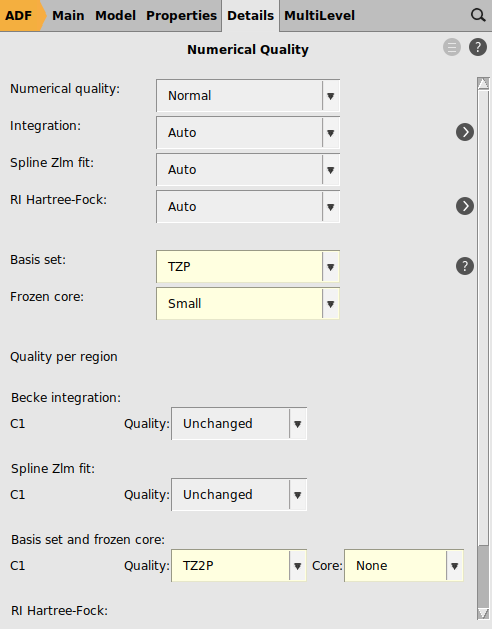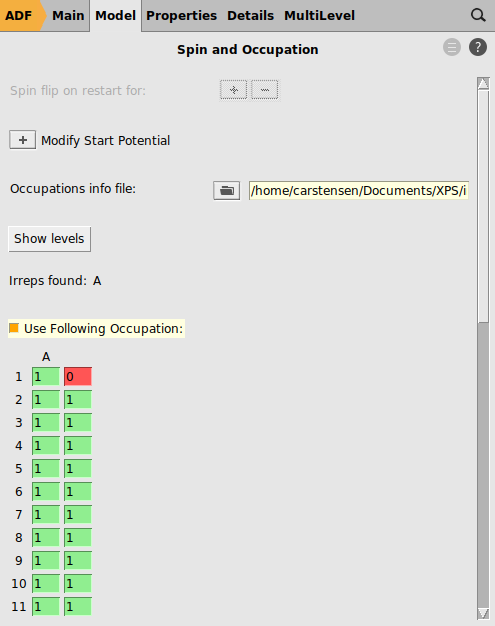Core Ionization Potentials (XPS) of thiophene¶

This tutorial demonstrates how to calculate core Ionization Energies (IE) as probed in X-ray Photoemission Spectroscopy (XPS). After calculating the IEs of a thiophene molecule, one can assign the experimental XPS peaks nicely to the different carbon sites in the molecule. The tutorial is based on the publication C. Grazioli, O. Baseggio, M. Stener, G. Fronzoni, M. de Simone, M. Coreno, A. Guarnaccio, A. Santagata, and M. D’Auria, Study of the electronic structure of short chain oligothiophenes, J. Chem. Phys. 146, 054303 (2017). .
Preparation¶
Before the computation of IEs, the molecular structure of interest should be optimized.
Note
The geometry used in this tutorial has been relaxed with a BP86/TZP DFT calculation.
Setup¶
Begin by importing the coordinates and setting up the general parameters for the DFT calculation
thiophene.xyz and import them into AMSinput
Remark: an unrestricted calculation is not needed for a closed shell molecule, but in this case it is handy, since later we will read the electron configuration of this calculation and change it to an open shell electron configuration.
Next, assign a region to one carbon atom to allow specifying a larger all electron basis set to that atom. The trick used here is that a frozen core basis set is used on all atoms except the carbon atom of interest, such that later one can remove 1 electron from the 1s orbital on this carbon atom, without the risk that during the SCF this core hole becomes nonlocal, since all other carbon 1s orbitals are in the frozen core.
C1
to define a large basis set for this Carbon atom only:

Results¶
Once the calculation is finished, open the output (or logfile) and note the bonding energy.

Finally, create a hole state and calculate the bonding energy
0
Again, the bonding energy is reported in the output file (or logfile) once the calculation has finished. The energy difference between the two bonding energies equals the core Ionization Potential (IP):
Repeating the calculation with one of the Carbon atoms opposite the Sulfur atoms yields the second IP:
The computed IPs agree very well (probably due to error cancellation) with the fitted experimental values published in 1. Note that typically one is more interested in the difference of the IPs at different carbon atoms (chemical shifts in carbon 1s IP). Here the calculated difference is 0.28 eV, which is close to the experimental value of 0.25 eV.
- 1
C. Grazioli1, O. Baseggio, M. Stener, G. Fronzoni, M. de Simone, M. Coreno, A. Guarnaccio, A. Santagata, and M. D’Auria Study of the electronic structure of short chain oligothiophenes, J. Chem. Phys. 146, 054303 (2017)

